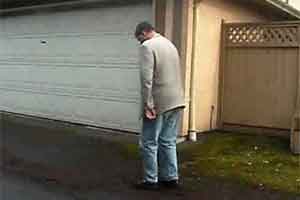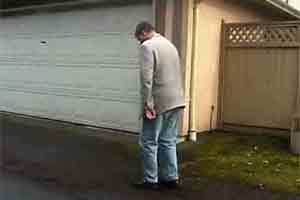Parkinson’s Disease Patients Benefit from Physical Activity

 A comprehensive review published in the Journal of Parkinson’s Disease confirms that people living with Parkinson’s disease (PD) can benefit from being physically active, especially when it comes to improving gait and balance, and reducing risks of falls. It concludes that health professionals should be confident about prescribing physical activity to improve the health and quality of life of PD patients.
A comprehensive review published in the Journal of Parkinson’s Disease confirms that people living with Parkinson’s disease (PD) can benefit from being physically active, especially when it comes to improving gait and balance, and reducing risks of falls. It concludes that health professionals should be confident about prescribing physical activity to improve the health and quality of life of PD patients.
“Exercise should be a life-long commitment to avoid physical and cognitive decline, and our research shows that this is also true for individuals with PD,” explained Christian Duval, PhD, Professor, Département des sciences de l’activité physique, Université du Québec á Montréal, Montréal, Québec, Canada. Despite the progressive nature of the disease, people living with PD can expect to improve their physical condition by being more physically active.
Because PD prevalence will likely increase in future, in part due to life-extending treatments now available, interventions aimed at minimizing morbidity are crucial to reducing the strain on the healthcare system and improving the quality of life for PD patients. With both aging and living with PD associated with increased sedentary behaviors, these results should encourage patients to become more physically active and caregivers, and healthcare providers to facilitate these activities.
Investigators conducted an in-depth analysis of 106 studies conducted over the past 30 year, which resulted in a significant number of outcome measures — 868. This provides a clear picture of the current scientific knowledge regarding to the effects of physical activity on the health of people living with PD.
By grouping these outcomes into four main categories, (1) physical capacities (eg. strength, flexibility), (2) physical and cognitive functional capacities (eg. gait, mobility, cognitive functions), (3) clinical symptoms of PD (eg. rigidity, tremor, posture alterations), and (4) psychosocial aspects of life (quality of life and health management), they could determine whether physical activity had a positive effect on each category. They further subdivided these categories into subcategories to look for specific benefits at a more granular level.
PA was most effective for benefiting physical capacity and physical and cognitive functional capacity. Physical capacity includes subcategories such as limb strength, endurance, flexibility or range of motion, motor control, and metabolic function. More than 55% of all studies found positive effects in these 2 main categories. Some subcategories, such as upper limb strength, saw improvement in almost 67% of all studies. The results in subcategories of cognitive function were low, but the researchers note that there were only nine studies that measured cognitive improvement from PA for PD patients. This might indicate that further research in this area is needed.
The connection between PA and clinical symptoms of PD, and psychosocial aspects of life, are less clear, with only 50% and 45.3% of results reporting positive effects, respectively. In the clinical symptoms of PD category, both the highest (motor evaluation, gait and posture alterations) and lowest (bradykinesia, freezing and tremor) effectiveness rates were found across the subcategories.
“In addition, to confirm the positive role of physical activity for patients with PD, this study has identified areas in which more research is needed. As such it will serve as a guide for future investigations,’’ added Jean-Francois Daneault, co-author and postdoctoral fellow at Harvard University.
Co-investigator Martine Lauzé, of the Centre de recherche de l’Institut universitaire de gériatrie de Montréal, Montréal, Québec, Canada, added “Fortunately, studies show that all people may benefit from being more physically active, no matter their age and condition, it is never too late to start!”
Source: IOS Press
Full bibliographic information:
“The Effects of Physical Activity in Parkinson’s Disease: A Review,”
Journal of Parkinson’s Disease, Volume 6, Issue 4




